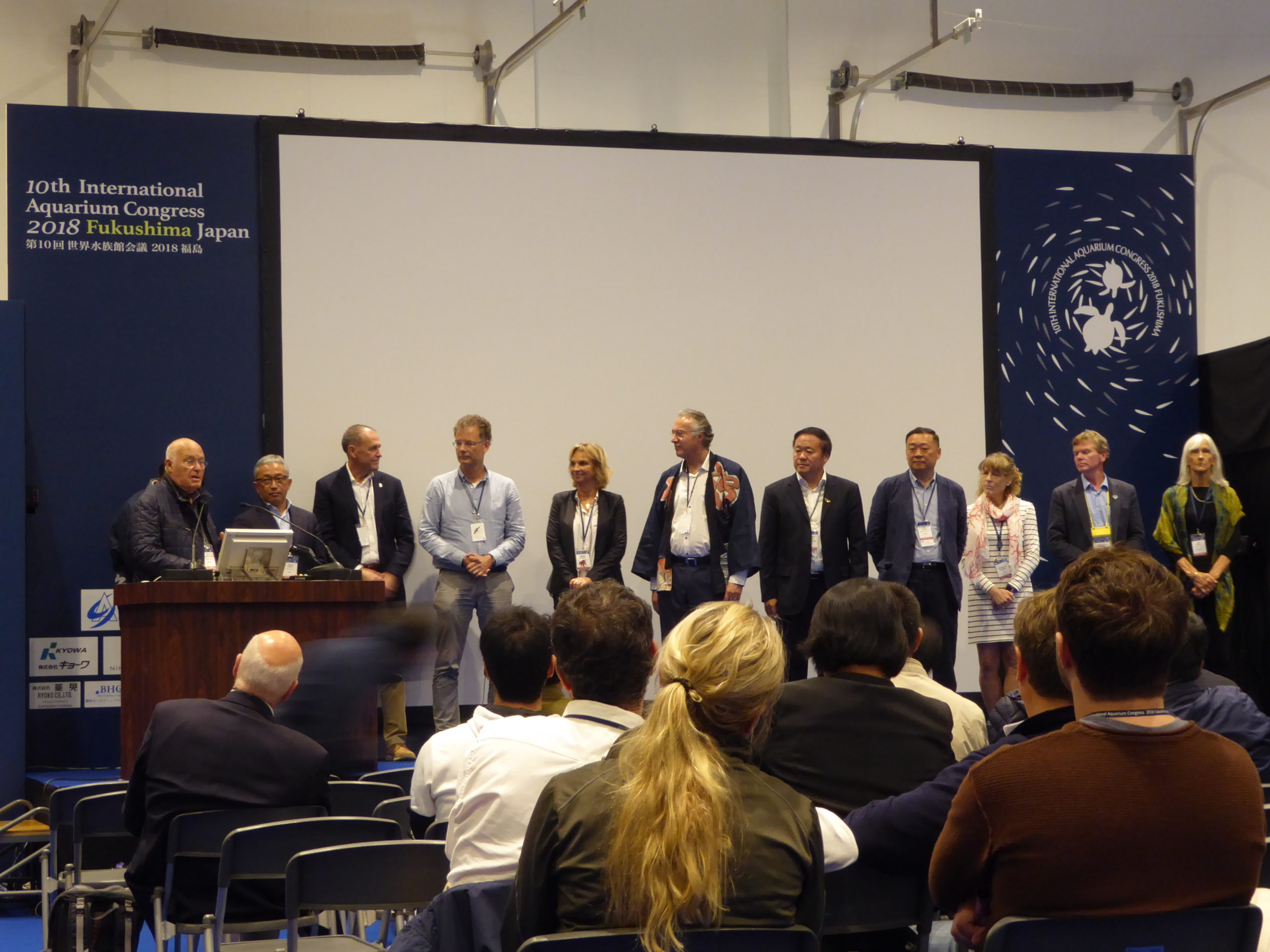What do Japanese aquariums have to offer the world? I’m very excited about the possibilities, but I think it’s a long and hard road to travel.
About International Aquarium Congress
After I’ve generally finished my introduction to the overseas aquariums I visited, I’ll look back at the 10th International Aquarium Congress, which was held in 2018 and was the perfect opportunity to get a glimpse of the international aquarium industry in action while in Japan.
The International Aquarium Congress has been held since 1960, where officials from more than 600 aquariums around the world discuss the ecology of our precious aquatic environment. It is open to all for a fee of about 60-80,000 yen. The first two meetings were held at the Monaco Museum of Marine Science as the International Congress of Aquariology, which was later renamed the International Aquarium Congress, and the conferences are stored on a continent-by-continent basis. The 4th congress was held at the Tokyo Sea Life Park in 1996 and has been held every four years since then. However, in recent years, there has been a growing need for the preservation of the oceans and marine resources, and this year, the 10th event was held at Aquamarine Fukushima, two years after the last one, with the theme “Think about our future on Earth.” Approximately 500 participants from 35 countries attended the 10th congress. The presentations were made in oral or poster sessions. The topics were spanned the broad fields: “Pollution of the Water Planet,” “In-situ Conservation Activities,” “Philosophy in Nature, and Aquarium,” “Research Activities in Aquarium,” “Education in Aquarium,” “Fisheries and Role of Aquarium,” “Aquarium Design and Construction,” and “Economy of Aquarium.”
Proposals at the global level
Among the many presentations, there were also a wide range of suggestions for the changing social climate of today and the essential role that aquariums should play in the future.
- Passing on the history of the relationship between people and nature through fishing
- Efforts to establish a sustainable fishery
- Providing an active experience through immersive nature programs and enhanced display methods
- Review of educational areas beyond marine science and methodologies such as active learning
- Answering to the growing skepticism about breeding animals in aquariums among Gen Y and Z
- Not only to balance the triple bottom line but also to challenge ourselves in new areas
- Partnerships that transcend sectors, borders and cultures
- An attitude of not being afraid to fight against criticism.
Furthermore, there was also an opinion that the three missions of aquariums are to tell the story of the ocean, to connect with people, and to raise their voices and spread action. Today, values are beginning to change as social impact is starting to emerge, for example. Also, with advances in technology, VR experiences are beginning to emerge that outperform the real animals. Furthermore, with the advent of information overload, people’s attitudes towards nature are also starting to change significantly. What is required in these times may not be the four roles that have been passed down in the industry for nearly 100 years: entertainment, research, conservation, and education, but relatively this higher-level concept that surpasses the four roles.
And at the closing ceremony, a powerful declaration was made.
Humankind has the obligation to preserve Earth’s aquatic ecosystems for the future of both nature and humanity. Each individual can contribute daily through his or her action. We have little time, let’s act immediately. All together, we can make the difference.
It was also noted that technology and partnerships are essential for this change and that it is especially important to attract younger generations to ocean science. In this international trend, UNESCO and the IAC have identified the decade from 2021 to 2030 as the “Ocean Science Decade.” The next 11th edition is set for the first of these years, three years after 2018.
Hopes for Japanese Aquariums
As an economically advanced country, coupled with the International Aquarium Congress in Japan, there are many international hopes that Japan will take the initiative to lead this global movement, or, if not, to take concrete action in response to it. However, I wonder how many aquariums in Japan are capable of handling such action. The Japanese are culturally reluctant to take a leadership role in the international society. However, I am very concerned that they will be left out of global trends and disappointed if they make such excuses and do nothing.
I may be biased, but I think that although Japan’s technology in animal husbandry and research is highly developed, there are significant problems, especially in the ability to spread information and the ability to design content. I think one of the main reasons why Japanese aquariums have not been able to make changes in this regard is because they have not demanded them to do so. The issues of whaling and dolphin breeding have indeed come under intense external pressure from WAZA. But the public’s voice on animal rights and animal welfare is still not loud enough to move the industry as a whole. Nevertheless, dramatic advances in technology, such as VR, have the potential to be a powerful force for change in the future of Japanese aquariums. I will discuss this again in more detail.
Now, two years later, the Corona Disasters have divided the world, and aquariums around the world are facing major management challenges. In other words, the foundations of aquariums, even their ability to maintain exhibitions, have been shaken. What can Japanese aquariums offer to the world? I’m very excited about the possibilities, but I think it’s a long and hard road to travel.



コメント